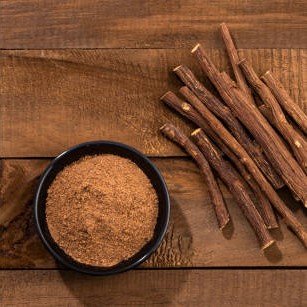Licorice
Scientific Name: Glycyrrhiza glabra
English Name: Licorice
Botanical Description
Licorice is a perennial plant belonging to the Fabaceae (legume) family. It has compound, pinnate leaves, small violet or pale blue flowers, and seed-containing pods. Licorice thrives in warm and temperate regions and is well known for its sweet roots, which are widely used in medicine and the food industry.
Types
European Licorice (Glycyrrhiza glabra)
Chinese Licorice (Glycyrrhiza uralensis)
American Licorice (Glycyrrhiza lepidota)
Health Benefits and Medicinal Uses
Digestive Health Support: Used to treat gastric ulcers and gastritis.
Immune System Boosting: Contains antibacterial and antiviral compounds.
Respiratory Health Improvement: Helps relieve cough and throat infections.
Anti-inflammatory Properties: Helps reduce inflammation in joints and muscles.
Hormonal Balance: Used in certain hormonal treatments, particularly for women.
Liver Detoxification: Supports liver function and helps eliminate toxins.
Culinary and Medicinal Uses
Consumed as an herbal tea for digestive and respiratory issues.
Used as a natural flavoring agent in candies and beverages.
Utilized in traditional medicine to treat respiratory and digestive disorders.
Incorporated into cosmetic products for its soothing properties.
Cultivation Methods
Grows best in temperate and warm climates, requiring full sun exposure.
Prefers well-drained sandy loam soil rich in nutrients.
Propagated through seeds or root cuttings in early spring or autumn.
Requires moderate irrigation, avoiding excessive watering to prevent root rot.
Takes 2-3 years to mature before being ready for harvest.
Part Used as Medicine
Dried roots, which contain the active compounds.
Planting Season
Licorice is planted in spring (March – May) or autumn (September – November).
Roots are harvested after 2-3 years of growth.
Active Compounds
Glycyrrhizin: The primary compound responsible for the sweet taste of licorice, with anti-inflammatory properties.
Flavonoids: Powerful antioxidants that protect cells from damage.
Saponins: Support immune system function.
Phenolic Compounds: Possess antibacterial and antiviral properties.
Export Details Worldwide
Packaging: Bags
Type: Powder & Whole Licorice
Weight: 20 or 25 kg
Packaging: Automated
Origin: Egypt

Whole Licorice

